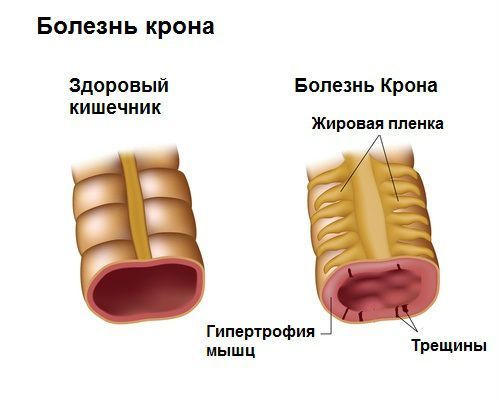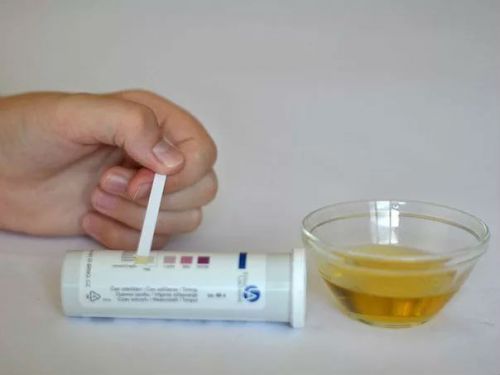Urine represents the end product of the functional activities of the body. By its appearance, smell, colour and consistency can be judged on many processes that occur in the human body.
Normal released from the body urine is a pale yellow, mild odor, moderate consistency and contains no pathological impurities.
With the development in the human body of various diseases organoleptic properties and composition of the selected biological fluid changes. In our article we want to talk about the phenomenon of sticky urine.
We will give answers to the following questions: why it appears, what to do in this case and how to avoid such condition.
Parameters of urine of a healthy person
General clinical analysis of urine is one of the most informative diagnostic tests, it is done:
- with an annual preventive medical examination;
- the detection of pathological processes in the urinary organs;
- inflammation of the prostate gland in men;
- the preparation for surgical intervention;
- infectious diseases;
- suspected diabetes mellitus;
- monitoring of the disease;
- the control of rationality of a course of medical therapy.
To decipher the final research data difficult, the rate of physical, chemical and microscopic properties of urine is simple. Their knowledge will be useful to everyone adult, and will help to avoid unnecessary anxiety while testing.

The color of urine should be straw-yellow hue. The change in this indicator in colorless is the result of dehydration (dehydration) of the body. The acquisition of a biological fluid-rich dark, reddish or brown tint indicates a severe lesion of urinary organs infectious-inflammatory process to a malignant neoplasm.

Urine should be transparent, the appearance in it of turbidity is observed in the presence of pathological impurities salt crystals, large amount of mucus, epithelial cells and leukocytes. Specific gravity (or relative density) due to the level content in the urine of glucose, total protein and salts. Its settings range from 1009 to 1026 g/l.
The reaction medium is normal urine acidic (4.5 to 7.0). Its decline is characteristic of people in the diet dominated by plant foods, as well as renal pathologies, disorders of hormonal balance of micronutrients. Acidity in the dehydration, prolonged fasting, diets, diabetes.
The reaction medium of urine is very easy to identify at home – for this purpose in pharmacies sell special test strips
Urine has a specific smell blurred. The appearance ammonium of the spirit is always evidence of diabetic pathology.
Total protein in urine may be present in a minimum concentration of 0.02 g/L. Physiological levels increasing (proteinuria) is observed following the ingestion of alcohol, fatty, spicy and salty dishes. A marked increase in protein concentration indicates the development in the kidneys of the inflammatory process.
Glucose is not contained in the urine of a healthy person, the main causes of its appearance – the presence of diabetes, acute pancreatitis, pheochromocytoma (hormone-active tumors of adrenal glands), nephrotic syndrome. Ketone bodies in normal urine are absent, their detection indicates a breach in the human body metabolic processes. The appearance of ketones is observed in thyrotoxicosis, diabetes, alcohol intoxication.
The appearance in the urine bilirubin is characteristic of lesions of hepatocytes (liver cells), hemolytic disease and severe intoxication. The presence of urobilinogen bodies indicates inflammation in the intestines, liver failure, General purulent infection (sepsis).
Normal urine contains no hemoglobin, its occurrence is observed in large-scale destruction of red blood cells (erythrocytes). This condition is characterized by myocardial infarction, trauma, kidney, malignant lesions of the urinary tract, malaria, burns, blood transfusion.
In the urine of a healthy male contains from 0 to 5 in field of vision of leukocytes in women – up to 8 in p/Zr, a child – up to 3 in p/Zr. The increase in the number of cells (leukocyturia) is a sign of inflammation of the urinary organs. Erythrocytes do not fall into the urine, their appearance indicates severe kidney damage and urinary tract.
Epithelial cells contained in urine in a single amount, the increase is characteristic of cystitis (inflammation of bladder walls) and nephrosis. The appearance in the urine cylinders is observed with hypertension, use of diuretics, renal disease. Normal urine does not contain salt crystals, their appearance is considered the first symptom of urolithiasis (kidney stones).
The appearance of bacteria in urine is evidence of the presence in the urogenital tract of the infection process. Yeast-like fungi accompany immunodeficiency, vaginitis, prostatitis, diabetes, cystitis.
Knowing the basic properties and characteristics of urine, any person will be able to draw conclusions about the state of his health. However, one should not self-medicate if you change well-being you should seek medical attention from experienced professionals. Let’s look at the condition of urine symptoms of certain diseases.
Pathological impurities, which change the composition of urine
Normal biological substance contains water and other components. The evaporation of water contained impurities in the urine leave a stain, sticky to the touch until the moment when the substance completely evaporates.
If the dried urine to the touch, the same sticky and contains crystallized marks – this indicates the existence of its pathological components. To change the consistency of the biological fluid released from the human body, can some favorite foods – garlic, asparagus, cabbage, etc.
But sometimes changes in biological fluids indicate the presence of existing problems:
- lesions of the urinary tract pathogenic bacteria;
- metabolic disorders;
- dehydration or poisoning of the body.
The allocation of muddy foamy urine is the first “signal” of increasing the concentration of total protein and bile acids. This phenomenon occurs in nephrotic syndrome – severe pathology characterized by lesions of the filtration system of the kidneys pathogenic viruses, tumor growth, autoimmune disorders, diabetes.

One of the most common autoimmune process affecting the composition of urine, considered Crohn’s disease – granulomatous lesions of various parts of the digestive tract
In ancient times healers for diagnostic purposes I tried the urine of a sick person taste. If it had a sweet taste and was sticky to the touch, this meant that in the body there are any violations. Modern medicine it is known that glucosuria (high glucose concentration in urine) is the first sign of diabetes.
Its Latin name disease received words: flow – diabetes, honey – mellītus. Diabetes suffers every twentieth inhabitant of the globe.
Disease, promotes the release from human urine sticky
The main source of energy for brain activity and muscle system of man – carbohydrates and glucose present in the food. When absorbed by the intestinal wall, these elements remain in the circulating blood cells of the vascular walls do not allow them in the fabric.
For the transport of glucose by the bloodstream the necessary special molecules-vectors – insulin. It was his deficiency in the human body provokes the increase in the level of glucose in blood and its appearance in the urine, from which it becomes sticky to the touch.
In modern medicine there are several types of glycosuria:
- Alimentary –develops in transient increases in the concentration of glucose in the blood due to consumption of carbohydrate-rich foods.
- Emotional – appearance in the urine of glucose observed after severe stress.
- Physiological – the period of carrying a child.
- Pathologic – characterized by extrarenal glucosuria, the appearance of sugar in the urine is not related to the increase of its concentration in the blood.
To measure the concentration of glucose in urine is easy and available to everyone – just dip the test strip in a biological substance and to compare its readings with the scale on the package

The main reason of the phenomenon that newly issued urine is sticky to the touch, is diabetic condition – most often insulin-dependent diabetes mellitus. The absorption of glucose in the circulating blood through the vessels occurs in the renal tubules, this process is possible only with the involvement of a special enzyme hexokinase. In the presence of human diabetes is the activation of this enzyme takes place only with the help of insulin.
In addition to this serious illness, highlighting, sticky urine occurs when the glycosuria of Central origin, which provoked:
- traumatic brain injury;
- tumor-like neoplasm of the brain;
- meningitis;
- encephalitis;
- hemorrhagic stroke.
The various febrile States, endocrine disorders, chronic nephropathy, acute renal failure, genetic glycogen storage disease, can also trigger the secretion of sticky to the touch urine.
In conclusion, the above information I want to mention again – change the properties and parameters of selected urine is very important and can indicate the development in the human body serious pathological processes. Do not neglect your health, it is necessary to consult specialists.




Love this.Very useful.Keep up the good work!!
I understand what you mean, but I have questions. Can we talk via email?
Sounds pretty interesting. Is it ok to pose a question? It’s just that..I can think of extra lessons that fit this.